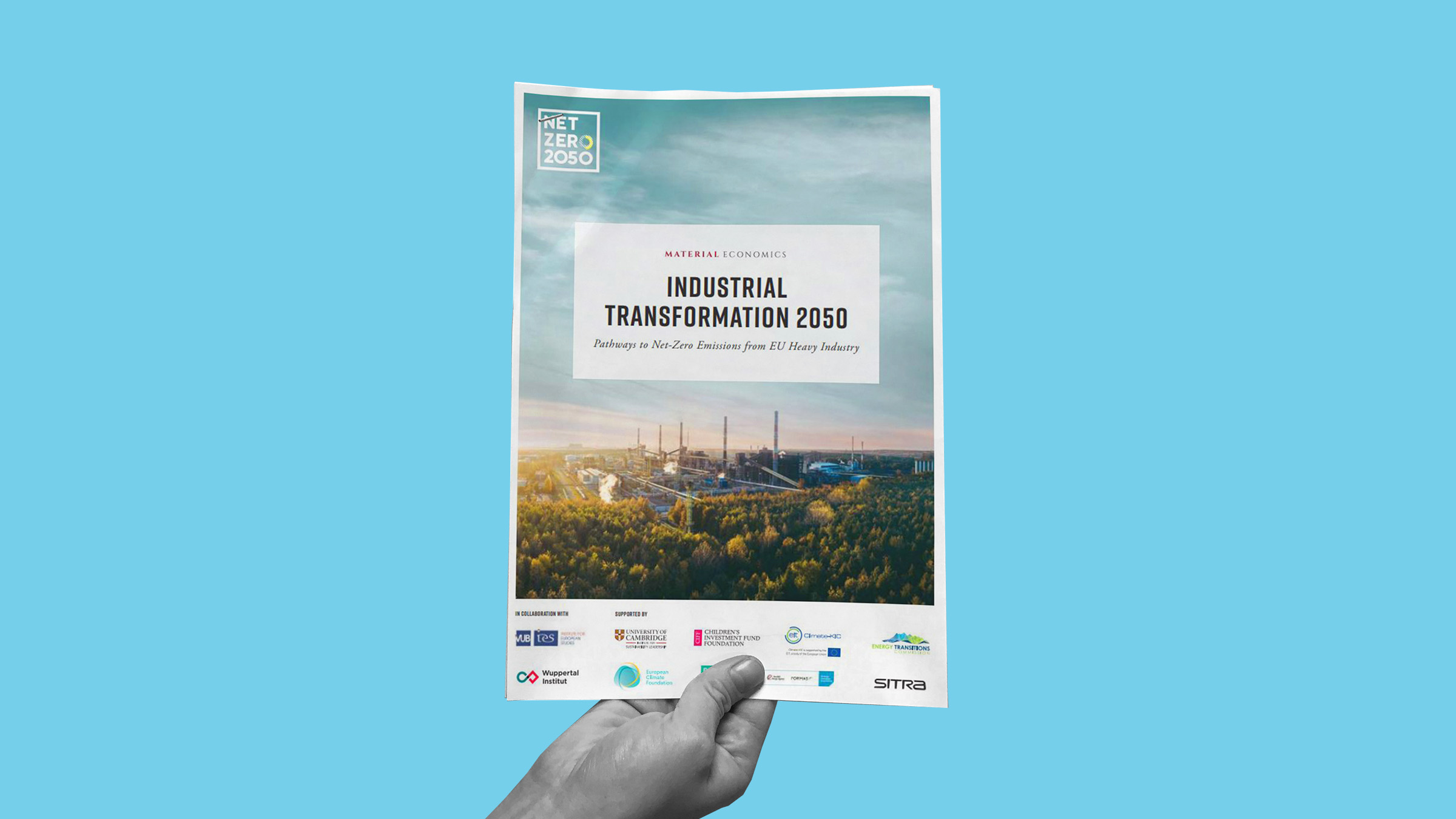Summary
This study explores multiple ways to achieve net-zero emissions from EU steel, plastics, ammonia and cement production while keeping that production in the EU. It quantifies the potential impact of different solutions and finds that emissions from those industries can be reduced to net zero by 2050, confirming the findings of the pathways presented in the Commission’s A Clean Planet for All. Many new solutions are emerging, thanks to a more circular economy with greater materials efficiency and extensive recycling of plastics and steel, as well as innovative industrial processes and carbon capture and storage. Many different industrial strategies and pathways can be combined to achieve net-zero emissions.
The analysis finds that the impact on end-user/consumer costs will be less than 1% regardless of the path pursued – but all pathways require new production processes that are considerably costlier to industry, as well as significant near-term capital investment equivalent to a 25–60% increase on today’s rates. Keeping EU companies competitive as they pursue deep cuts to emissions will thus require a new net-zero CO2 industrial strategy and policy agenda. There is a need to accelerate innovation, enable early investment, support costlier low-CO2 production, overcome barriers to circular economy solutions, and ensure that companies can access the large amounts of clean electricity and other new inputs and infrastructure they need. Time is short, with 2050 only one investment cycle away, and any further delays will hugely complicate the transition. As the EU ponders its industrial future, this transformation should be a clear priority.
Key findings
Climate neutrality for heavy industry: From Whether To How
According to the report, there are multiple possible pathways the EU could pursue to achieve the full decarbonisation of its heavy industries by 2050.
- A more circular economy is a large part of the answer. Increased materials efficiency throughout value chains could cut 58–171 Mt CO2 per year by 2050. 800 kg of steel, cement and chemicals are used per person, per year in the EU. However, it is possible to achieve the same benefits and functionality with less material. Examples include new manufacturing and construction techniques to reduce waste, coordination along value chains for circular product design and end-of-life practices, new circular business models based on sharing and service provision, substitution with high-strength and low-CO2 materials, and less over-use of materials in many large product categories.
- Reusing materials that have already been produced can also result in large emission reductions. By 2050, 70% of steel and plastics could be produced using recycled feedstock. In the case of plastics, using end-of-life plastics as feedstock for new production could significantly reduce the need for fossil fuels to produce new plastics.
- Innovations in new, clean production processes and significant increases in renewable energy production will help enable deeper emission reductions over time. Between 143–241 Mt CO2 per year could be cut by 2050 by deploying new industrial processes. Innovations that would allow the use of electricity to produce high-temperature heat, switching for example from fossil fuels to green hydrogen, are emerging. However, these solutions need to be rapidly developed and deployed if they are to make a significant contribution by 2050.
- Carbon capture and storage/use (CCS/CCU). All pathways developed in the study show that there are cases where not all the emissions can be abated through circular economy and electrification. CCS and CCU will be required to cut between 45 and 235 MtCO2 emissions per year by 2050. However, as the study highlights, these measures are not a ‘plug and play’ solution and would require access to suitable transport and storage infrastructure.
The benefits of decarbonisation
- Reaching the full decarbonisation of its heavy industry will create an opportunity for Europe to become one of the key global hotspots for deep decarbonisation. Ten years ago Europe was an undisputed leader in a wide variety of renewable energy and low-carbon products and services. It now has the chance to boost the competitiveness of its industry by developing sustainable solutions that will be needed globally.
- Switching from the import of large quantities of fossil fuels and feedstocks to home-grown resources would significantly reduce European industry’s dependence on energy imports and will foster Europe’s energy trade balance. Steel, cement, and chemicals production together use 8.4 Exajoules (EJ) of mostly imported oil, coal, and natural gas. A major benefit of a more circular economy would be to reduce this need by up to 3.1 EJ per year in 2050.
The costs of the transition
- Thanks to a more circular economy and affordable electricity, consumer prices of cars, houses and packaged goods would increase by less than 1%. Overall, the additional costs of achieving zero emissions are around 0.2% of projected EU GDP by 2050.
- However, the business-to-business impact can be challenging and must be managed carefully. Therefore, strong policy support will be needed in the near term to ensure companies remain profitable in the transition.
Time is key
EU companies will need to make important investment decisions in the next few years. Changes in value chains and business models will take decades to establish and any delay will hugely complicate the transition. Therefore, national and European policymakers should urgently develop a comprehensive and integrated industrial climate policy strategy that ensures companies remain profitable in the transition to a net-zero and circular industrial future.
Towards an Industrial Strategy for a Climate Neutral Europe puts forward specific policy solutions to be taken into account by EU policymakers as part of their industrial strategy. The suggested policy options range from accelerating research and development, creating lead markets for and safeguarding the competitiveness of low-CO2 solutions, to incentivising and scaling up investments, enabling a fully circular economy as well as facilitating sector coupling and supporting infrastructure. It suggests that a dedicated governance mechanism for the industrial transition at the EU level must be put in place to guarantee a successful transition.



















Recommended
Have some more.